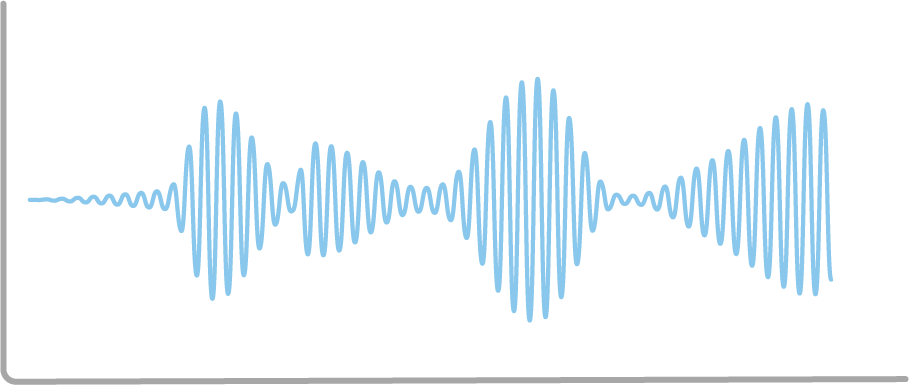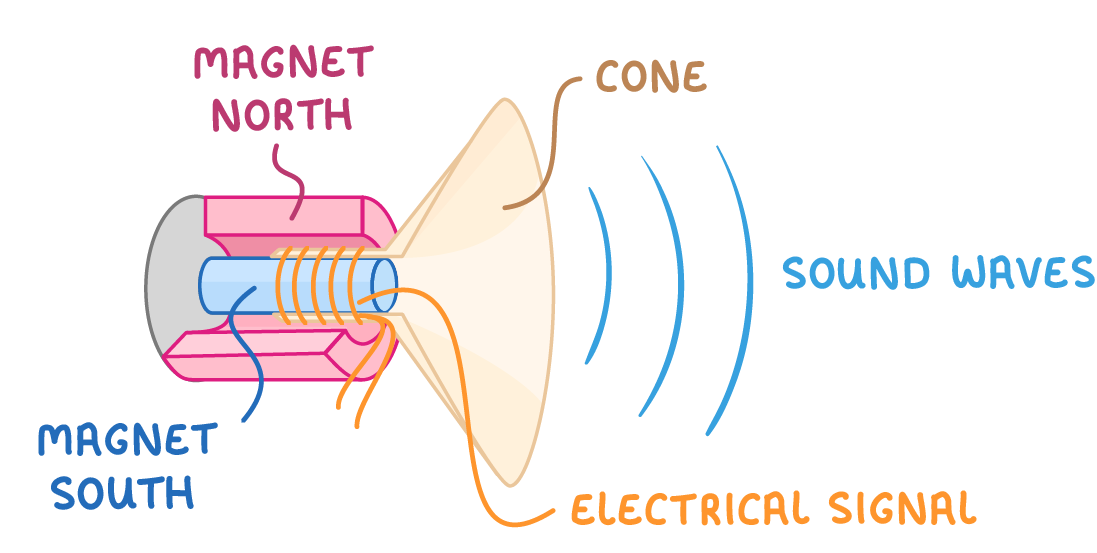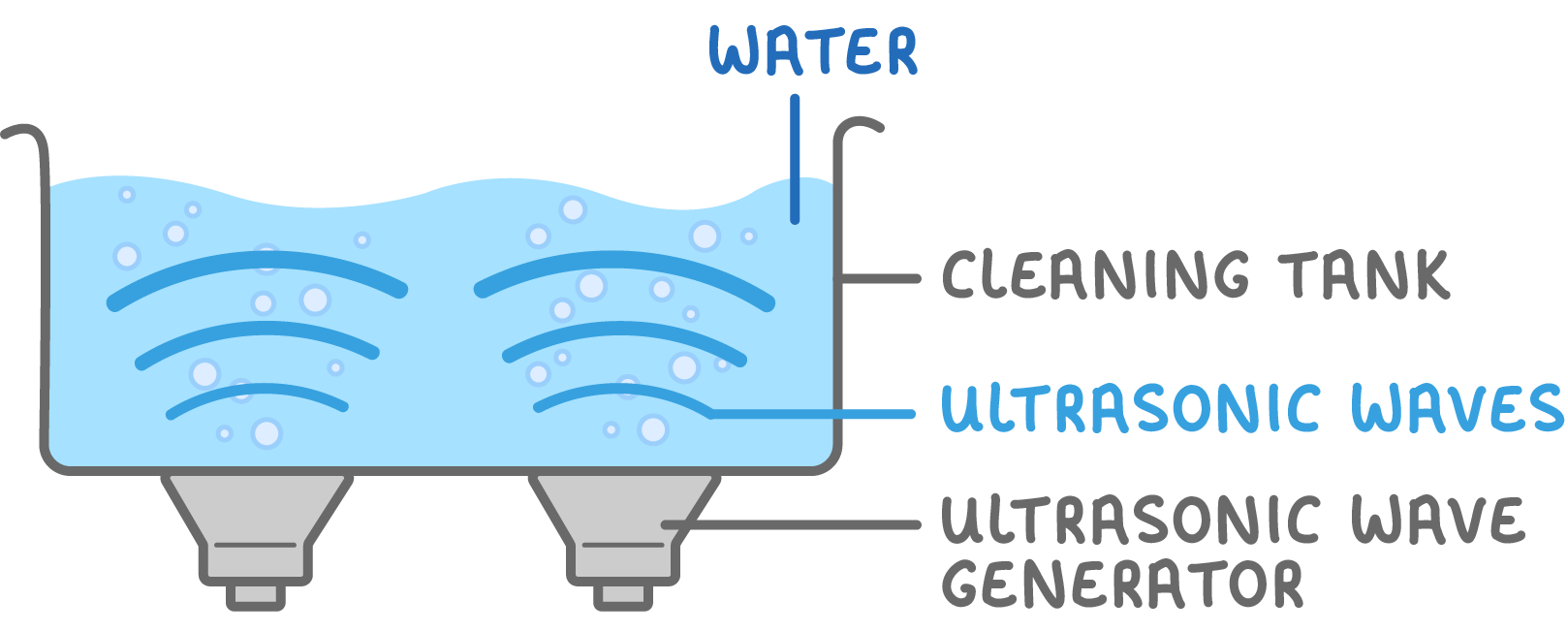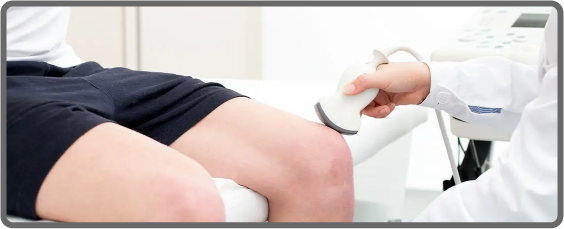Applications of sound waves
This lesson covers:
- How sound waves can transfer information
- How microphones and speakers work
- What ultrasound is and its applications
Sound waves transfer information

Sound waves transmit energy through vibrations between particles.
As they travel, these waves also carry information that can be recorded and replayed.
This allows sound waves to be a useful means of encoding data that can later be decoded.
How microphones and speakers work
Microphones and speakers both function using sound waves.
Microphones detect sound waves
Microphones convert audible sound into electrical signals.

- The incoming sound waves cause a diaphragm inside the microphone to vibrate.
- The microphone converts these vibrations into electrical signals.
- Another device can then store the signals so the original sounds can be reproduced.
Loudspeakers recreate sound waves
Loudspeakers work in reverse to convert electrical signals back into audible sounds.

- An electrical signal is input into the loudspeaker.
- This signal makes the loudspeaker's cone vibrate rapidly.
- The cone's vibrations cause the surrounding air to form new sound waves.
Ultrasound is high-frequency sound
Ultrasound refers to sounds with frequencies above 20,000 Hz, which exceeds the normal hearing range for humans.
Ultrasound is inaudible to us, however the high energy and pressure waves have useful applications.
Ultrasonic cleaning

- The object is immersed in a liquid-filled bath.
- Powerful ultrasound waves create bubbles that blast contaminants off surfaces.
- This cleans intricate items like jewellery or dental equipment.
Ultrasound physiotherapy

- Ultrasound can penetrate human tissue to reach deep muscles and tendons.
- Some therapists use ultrasound to try treating internal injuries.
- There is limited evidence that it is an effective therapy.